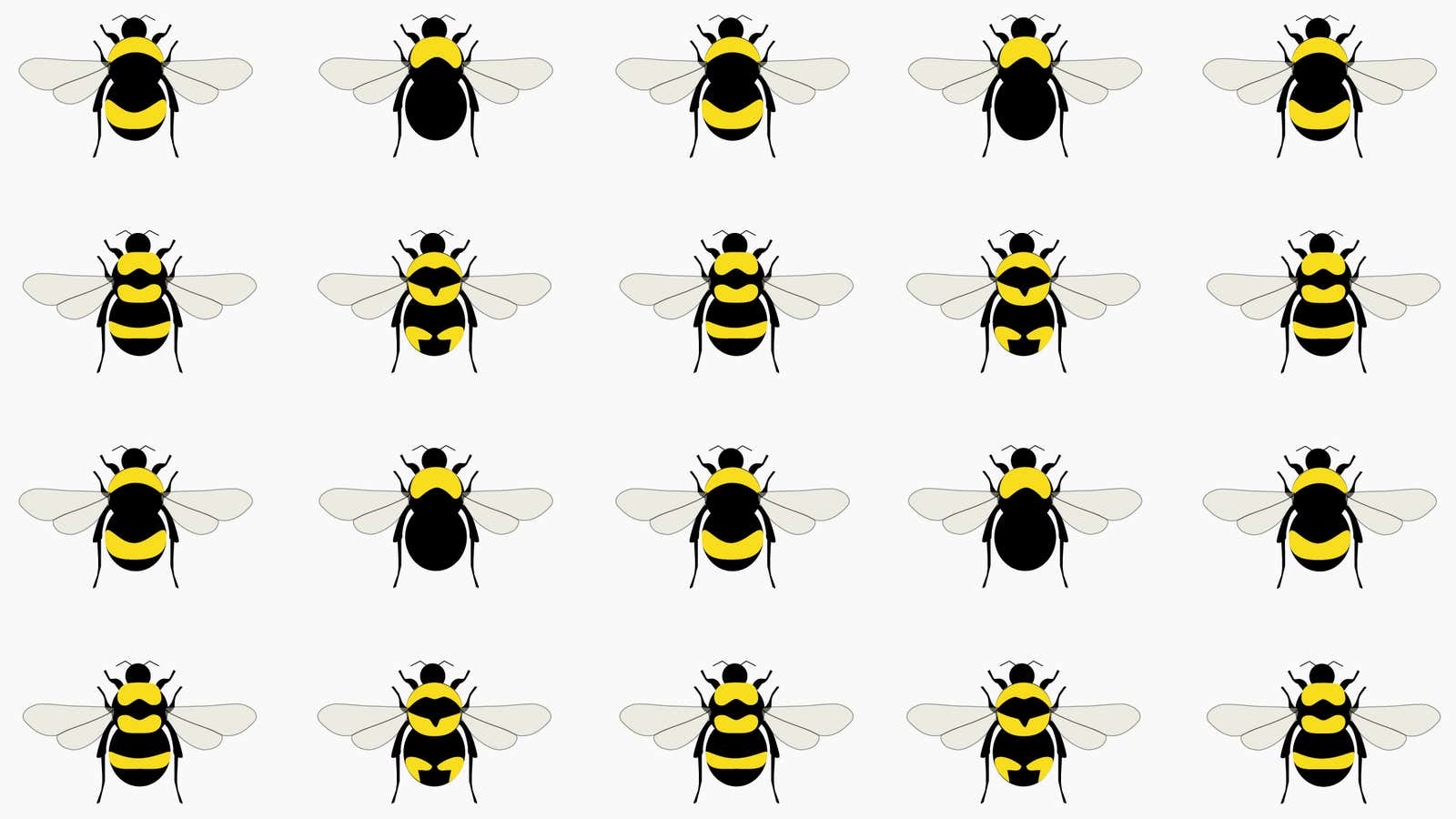Four species of bumblebees are now protected under California’s endangered species law. The 1970 law was originally written to protect fish, which legally encompasses all invertebrates including snails and other insects important to biodiversity. Since insects were not explicitly listed as a type of endangered species, the designation under invertebrates opens the path for protection. Public interest groups started pushing for bees to be included in this law starting in 2018 because of the insects’ importance in agriculture, and due to their recently dwindling numbers—a dangerous combination that could cost the state billions and imperil the country’s food security. The newly expanded law means bees are more likely to be kept in their native habitats, giving them a better chance for their populations to rise again.
Whether or not you know it, much of the food you eat depends on bees. Bees help pollinate three out of four crops (pdf) that produce fruits or seeds for human consumption and 35% of global agricultural land, per the UN Food and Agriculture Organization (FAO). Bees contribute an estimated $217 billion to the global economy and $11.7 billion in California alone, according to the California Department of Fish and Wildlife. Protecting and building habitats for pollinators keeps crop production in balance and food secure.
Proponents say legal protections for bees are necessary because their populations are drastically declining. Some farming groups are resistant to legally protecting bees, as many farms rely on pesticides and California accounts for 20% of all pesticides used in the US. Overuse of pesticides kills bees; in 2006, this became known as “colony collapse disorder,” when bees cannot repopulate their hives leading to massive die-offs. The US Department of Agriculture estimates the number of bees in the US has declined from 6 million in the 1940s to 2.5 million in 2021, a 42% decline. And the problem isn’t slowing down: Between April 2020 and April 2021, 46% of managed bee colonies in the US died off, the second highest annual loss on record.
The new legal status of endangered bees builds on other efforts to protect bee populations. In 2019, California enacted a law that requires beekeepers to register their hives of honeybees so that the bees can be mapped and tracked via the platform BeeWhere. Pest control advisers use the tool to determine if a hive is within a mile of a site that may use pesticides, potentially putting them at risk of colony collapse. The California Department of Fish and Wildlife also monitors endangered bumblebee populations.
